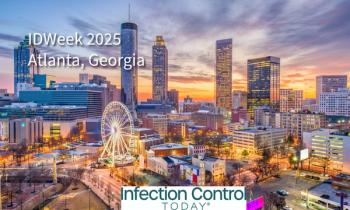
West Nile, Chagas, and Chikungunya: The New Geography of Vector-Borne Risk
Mosquito season isn’t over—act today. Tip and toss standing water, wear EPA-registered repellent at dusk/dawn, and keep screens closed. Clinicians: add West Nile to summer/fall neuro workups, ask about Chagas risk, and report dead birds or suspected cases the same day.
With global climate change, infection prevention scientists are concerned about the risk of vector-borne diseases. To learn about the current condition of West Nile virus, Chagas, and Chikungunya, Infection Control Today® (ICT) spoke with infectious diseases physician Matthew Pullen, MD, who is also an assistant professor at the University of Minnesota.
Heather Stoltzfus, MPH, RN, CIC, the research nurse program manager for Johns Hopkins Office of Population Health in Baltimore, also told ICT, "Diseases like West Nile, Chagas, and Chikungunya remind us that vector-borne risks are constantly evolving. West Nile is already part of the American landscape, and the same environmental and social forces that allowed it to take hold are now setting the stage for others to follow."
Stoltzfus, who is a member of the ICT Editorial Advisory Board, continued, "Climate change, migration, and urbanization are all redrawing the map of infectious disease. The question isn’t if these pathogens will appear, but whether we'll be prepared to respond to them when they do."
West Nile Virus History
When West Nile virus first appeared on the US radar in the late 1990s, many people—especially those outside the public health sector—associated it more with horses than with humans. That perception is fading fast. “We’re seeing, for many years now, an uptick in both mosquito-borne and tick-borne diseases,” says Pullen. “A lot of it’s tied to changes in our climate. As things warm, as things become more humid and moist, these insects and arthropods can expand.” That expansion, he notes, introduces disease into new areas and populations that are completely vulnerable.
Pullen, who is also a member of the Infection Control Today® Editorial Advisory Board, points to the ecology behind the headlines. “Mosquitoes…boom when we’ve had wetter or milder winters—more places to lay eggs—and then go on to spread infection,” he explains. “West Nile, too, can be spread through wild bird populations. If you see changes with migration of birds, that can affect it as well.” His own family has lived with that reality: “My grandmother in the Florida Panhandle gets state bulletins every year—if you see a songbird dead in your yard, don’t touch it. Call DNR.”
The West Nile Picture This Fall
Europe, meanwhile, continues to document widespread transmission.
Pullen’s practical advice aligns with those alerts. “With a lot of mosquito-borne diseases, the main thing is avoiding mosquito bites. Dawn and dusk are when they tend to bite, so be mindful of that,” he says. “For travelers to malaria or dengue areas, I give the same prevention talk: repellent, clothing, and awareness.”
Chikungunya: Vaccines and a Moving Target
What about chikungunya, which some US jurisdictions have recently flagged as locally acquired? Pullen does not downplay it—“It’s definitely not fun to have”—but he puts risk in context. “Outside of the very young, very old, or severely immunocompromised, it’s not typically fatal. The downside is symptoms can persist for months: body aches, muscle aches, joint aches that can be debilitating.”
He also mentioned a vaccine option during our conversation. Since then, the regulatory picture has shifted. On
(Editor's Note: There is also the VIMKUNYA vaccine available for chikungunya.)
Infection prevention advice still matters most: Use EPA-registered repellent, cover up at peak biting times, and check destination-specific guidance when traveling.
Chagas: From Imported to (in Part) Endemic
Ask a US clinician about Chagas disease, and many will think of immigration and travel from Latin America. That’s still the dominant pattern—but it is no longer the whole story. “Chagas disease is caused by Trypanosoma cruzi, spread by the triatomine—or ‘kissing’—bug,” Pullen says. “Typically, we see it in people who have been in, or are coming from, Central and South America…You get an acute infection that’s fairly mild, and then you can develop chronic disease. The big concerning thing is cardiac disease.”
He’s seen the consequences: “The couple of cases I’ve seen here were people coming for heart transplant as a result of chronic Chagas disease.” Treatments exist—nifurtimox and benznidazole—but are most effective earlier in the course of infection.
Recent surveillance underscores the need for US awareness. In August 2025, CDC researchers writing in
Pulling it together
Pullen’s through-line is that ecology and equity drive risk—and that public-health basics still work. “We’ve seen the geographic expansion of some of these mosquito and tick species,” he says. “More bugs mean more disease, and it’s moving into places that aren’t ready for it.” Readiness, he argues, is built on small, routine actions:
- Bite prevention: Use repellent, wear long sleeves at dusk and dawn, keep screens closed, and tip out standing water after rain.
- Reporting and surveillance: Do not handle dead birds; use local reporting hotlines that feed into state and CDC West Nile surveillance systems.
- Clinical vigilance: Consider West Nile virus in summer/fall neurological presentations; consider Chagas disease in patients with a compatible travel history, birthplace, housing history, or unexplained cardiomyopathy.
- Travel counseling: Review destination-specific risks (such as dengue, chikungunya, and malaria) and recommended repellents/precautions.
The final word is Pullen's, and it applies beyond West Nile virus and Chagas: Attention early, every day, beats heroics later. “Being mindful,” Pullen says of climate, seasons, birds, bugs, and the people most exposed, “is usually the advice I give. It’s not flashy, but it keeps people out of trouble.”
Newsletter
Stay prepared and protected with Infection Control Today's newsletter, delivering essential updates, best practices, and expert insights for infection preventionists.





